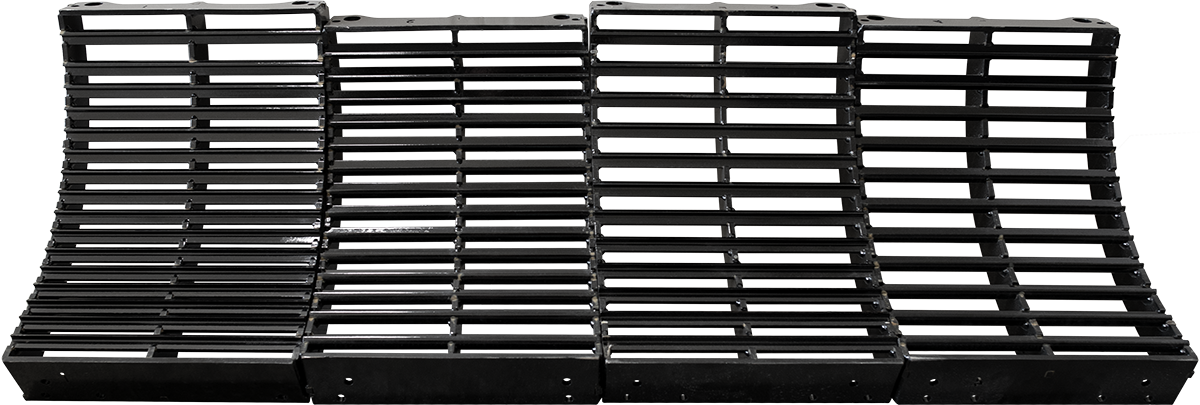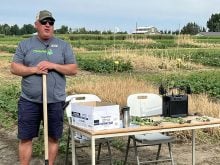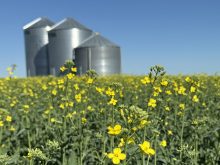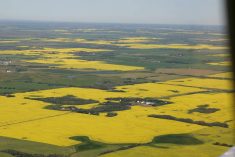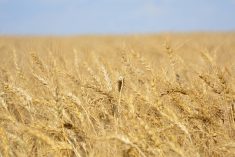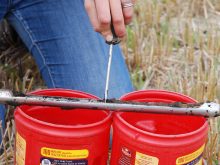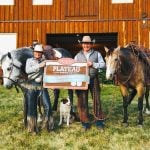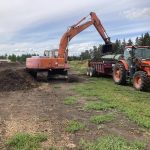WEYBURN, Sask. – Viewed from a certain angle, the farmyard does sit on a bit of a rise.
But the name has likely puzzled some, considering the generally flat landscape.
Shorty Croft Polled Herefords was established early last century, when Garth Charlton’s grandfather emigrated from England.
“It was the name of his farm in England,” Garth explained. “And it means small knoll.”
His grandfather settled his new small knoll northeast of Weyburn in 1908 and began raising commercial cattle and growing crops.
Read Also

AI expected to make itself felt in food systems
Artificial intelligence is already transforming the food we eat, how farmers produce it and how it reaches the consumer, experts say
In 1946, Garth’s father made the switch to purebred Herefords and by 1960 the family had moved to polled Herefords.
“We’ve dabbled in cross-breeding,” said Garth, who sat on the Saskatchewan Hereford Association board and is now a Canadian director. “But you can’t beat a Hereford cow.”
He points to the many white-faced cattle that indicate Hereford influence, chosen for their docility and mothering ability.
And in a dry year like this, Garth said, a Hereford cow is able to rummage around to find food.
Moisture conditions were actually pretty good in this area earlier in the year, but now it’s dry. The 70 km-h winds blowing the first week of October don’t help.
“We’re in good shape for feed,” Garth said. “We have quite a bit of carryover and a lot of wild hay.”
The Charltons have always operated a mixed farm and this year seeded 1,700 acres to lentils, flax, barley and durum. Last week, there was only the last of the flax to finish harvesting.
They feed lentil screenings to their cattle.
“It saves us buying commercial 32 percent protein,” he said.
They have slowly been seeding more land to grass to support their growing cattle operation. They used to seed about 2,500 acres, beginning around May 15.
Calving season begins in February and winds up in mid-April, in time to get ready for planting.
They will calve out about 175 head next year.
Their oldest son, Jeremy, recently purchased a purebred herd from a nearby farmer, which pushed their cattle numbers up by about 50.
Jeremy attended Olds College and returned to Shorty Croft about seven years ago, where he and his wife live in the house once occupied by his grandparents.
Jeremy custom fits cattle and spends a lot of time on the road at shows across North America.
Many of these cattle spend time at the Charlton farm on their way to a show. They all come with their own feed rations, which can make feeding a real chore.
The Charlton’s other son, Jamie, has an agriculture degree and is spending a final year at the University of Saskatchewan where he plays on the Huskies basketball team. He works part-time at Agricore.
“He likes the grain farming,” Garth said. “If I was to retire tomorrow it should be a perfect scenario. The trouble is there’s not enough money to go around.”
Marilyn took an indirect route to the farm. She was born in Swift Current but spent a good part of her childhood in the United States.
Her dad was a hockey coach and she arrived in Weyburn when he signed on with the Red Wings.
“I had no idea what to expect,” she said of moving to a farm.
But she learned how to feed cattle and operate equipment. Today, she is the general manager of the Saskatchewan Hereford Association.
The Charltons say their involvement with Hereford activities stems from a desire to give something back to a breed that’s been good to them.
They have been showing bulls at the Regina Bull Sale since 1947 and have won three championships – in 1993, 1994 and 2001.
They have also participated in Canadian Western Agribition since its inception. Marilyn sits on the executive.
Most of their cattle are marketed through an annual October production sale and three or four consignment sales.
“We’ve sent cattle all over since 1966,” Garth said, including Japan, Chile, Argentina, Bulgaria, Russia and England.
Buyers used to purchase heifers for about $1,000 and by the time they got them overseas they had cost about $2,500.
“Now it’s just easier to send the embryos or the semen,” Marilyn said.
They have shipped quite a few embryos to Australia. Many of those deals are a result of Agribition.
The Charltons say they don’t think of themselves as successful farmers. Marilyn prefers to say they are comfortable.
They’ve seen the trends in the Hereford breed and maintained what they believe is a moderate herd. They know what they are capable of doing and what they can’t do.
“We just plug away and do our own thing,” Garth said.

